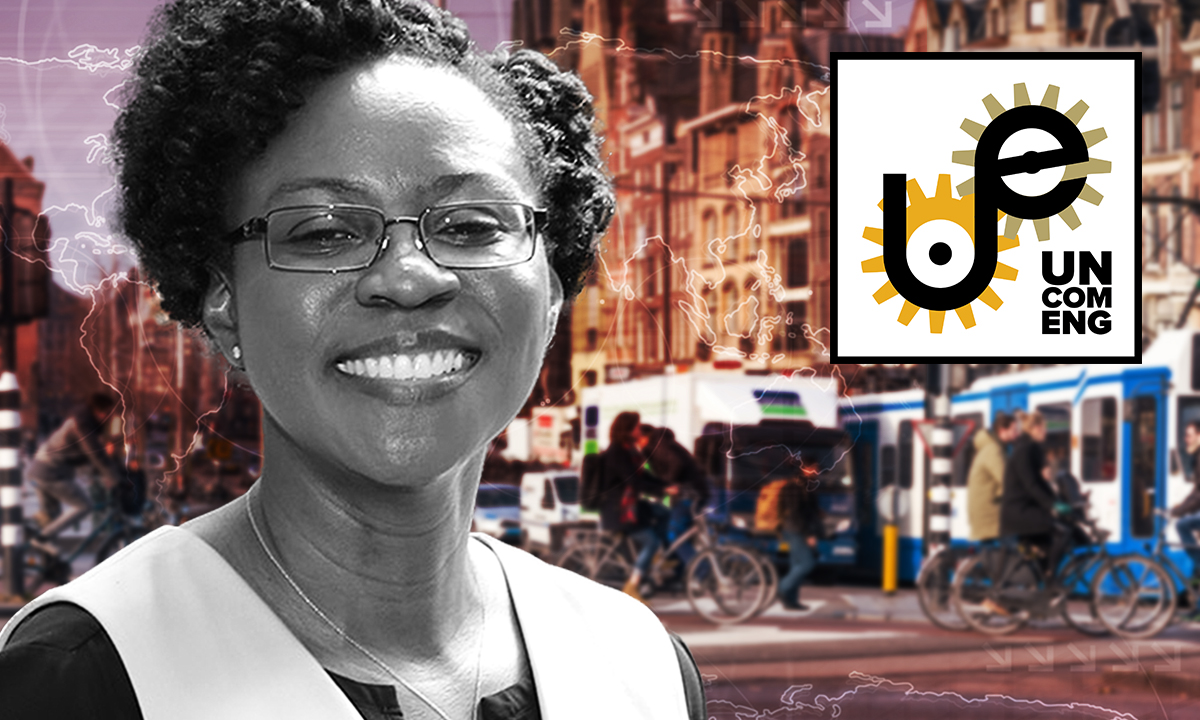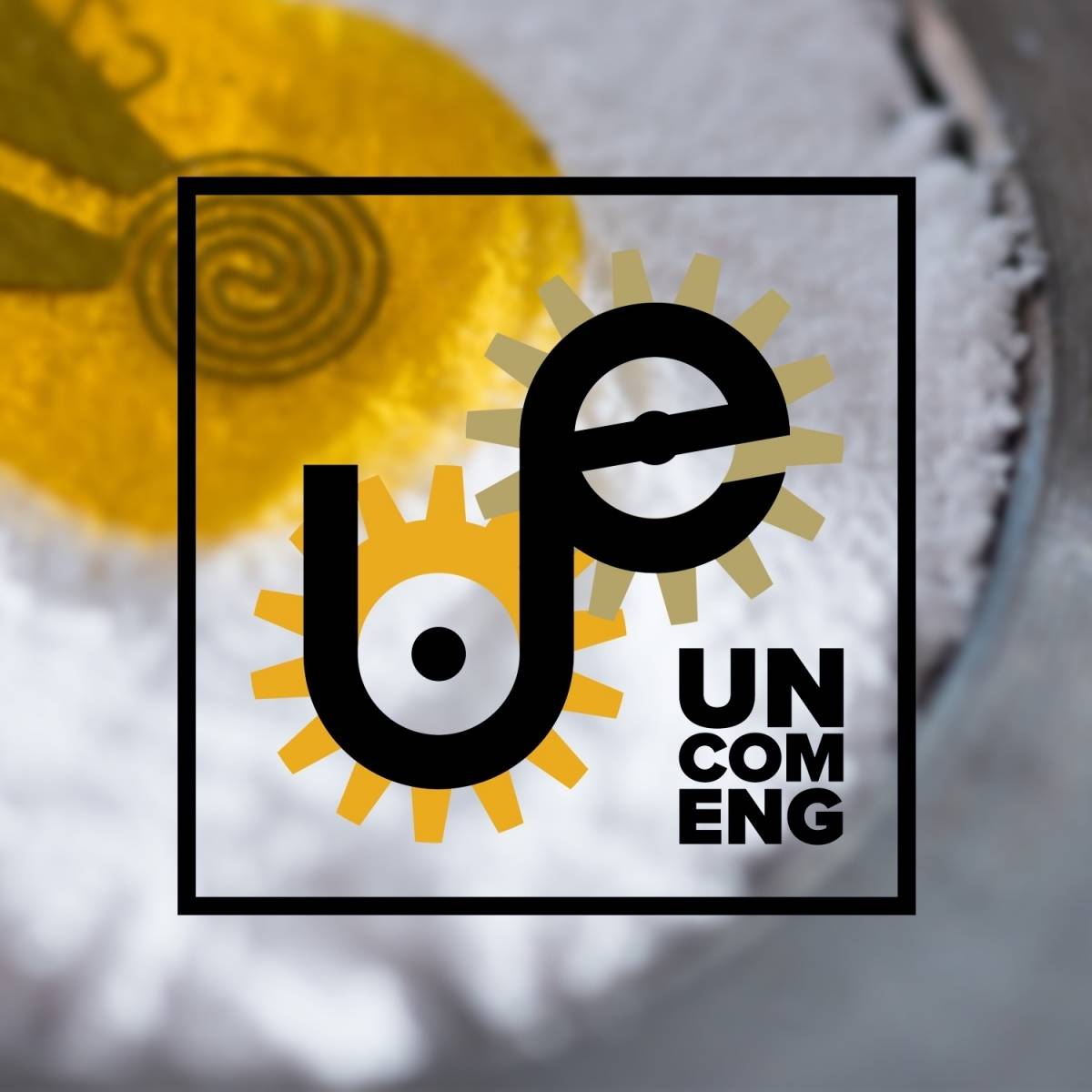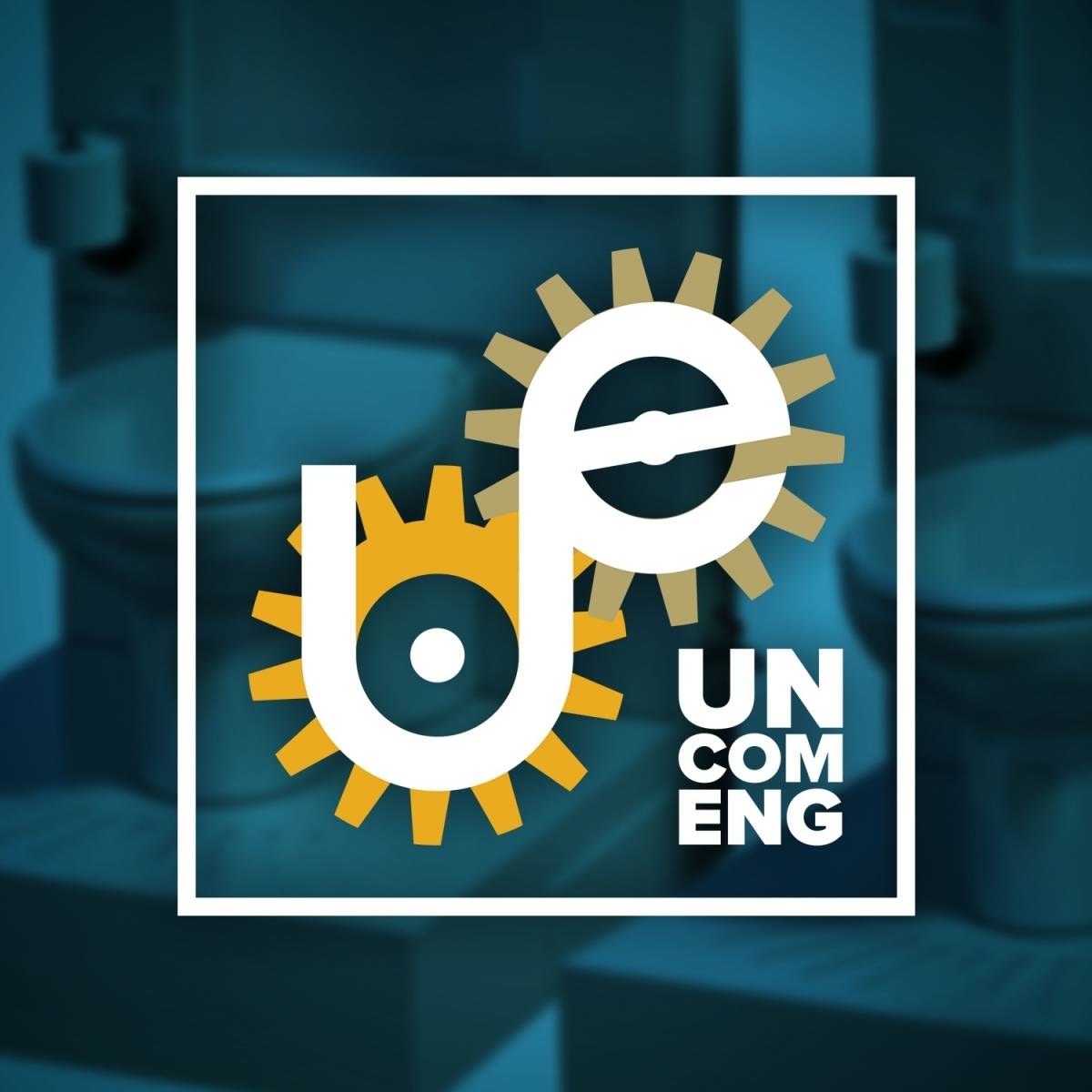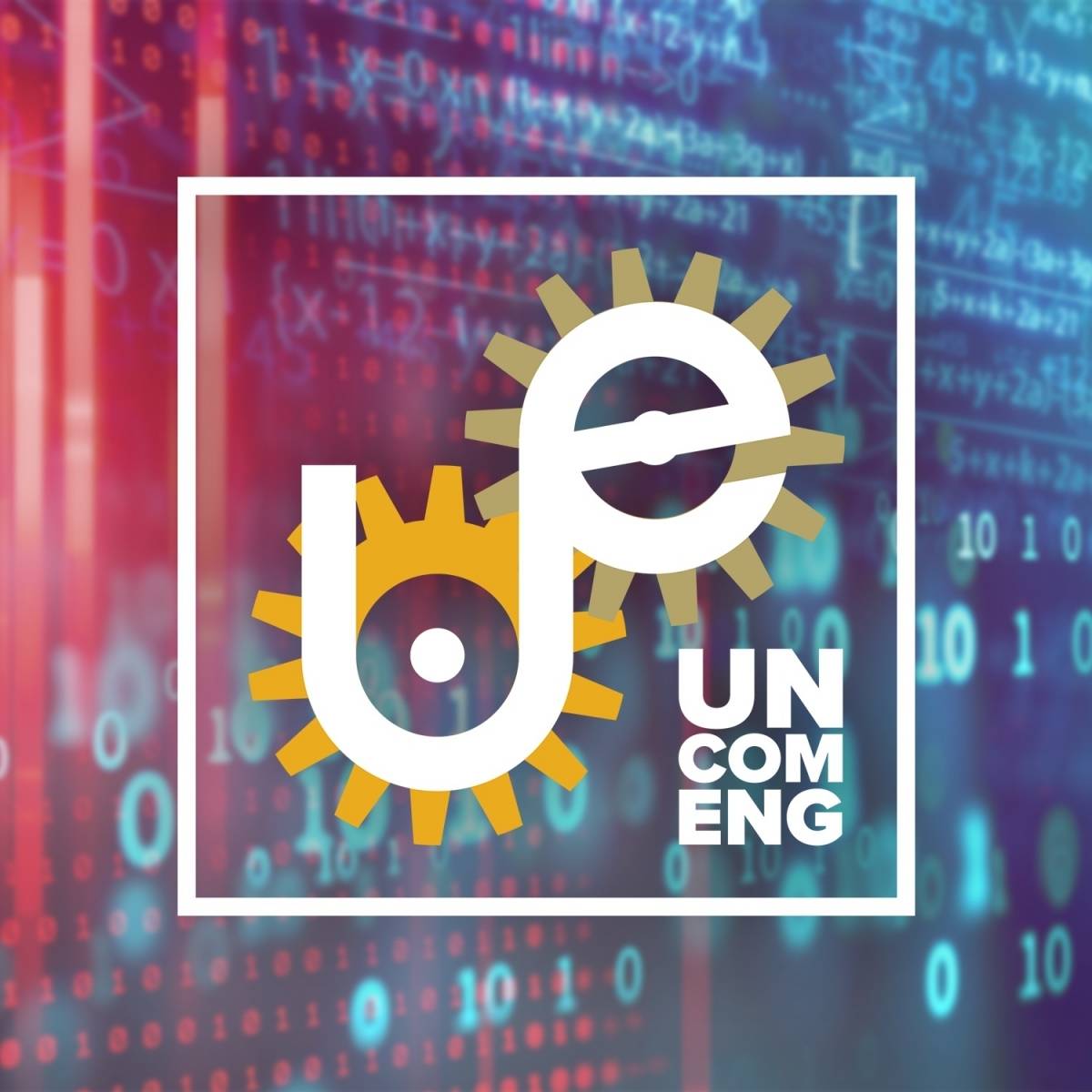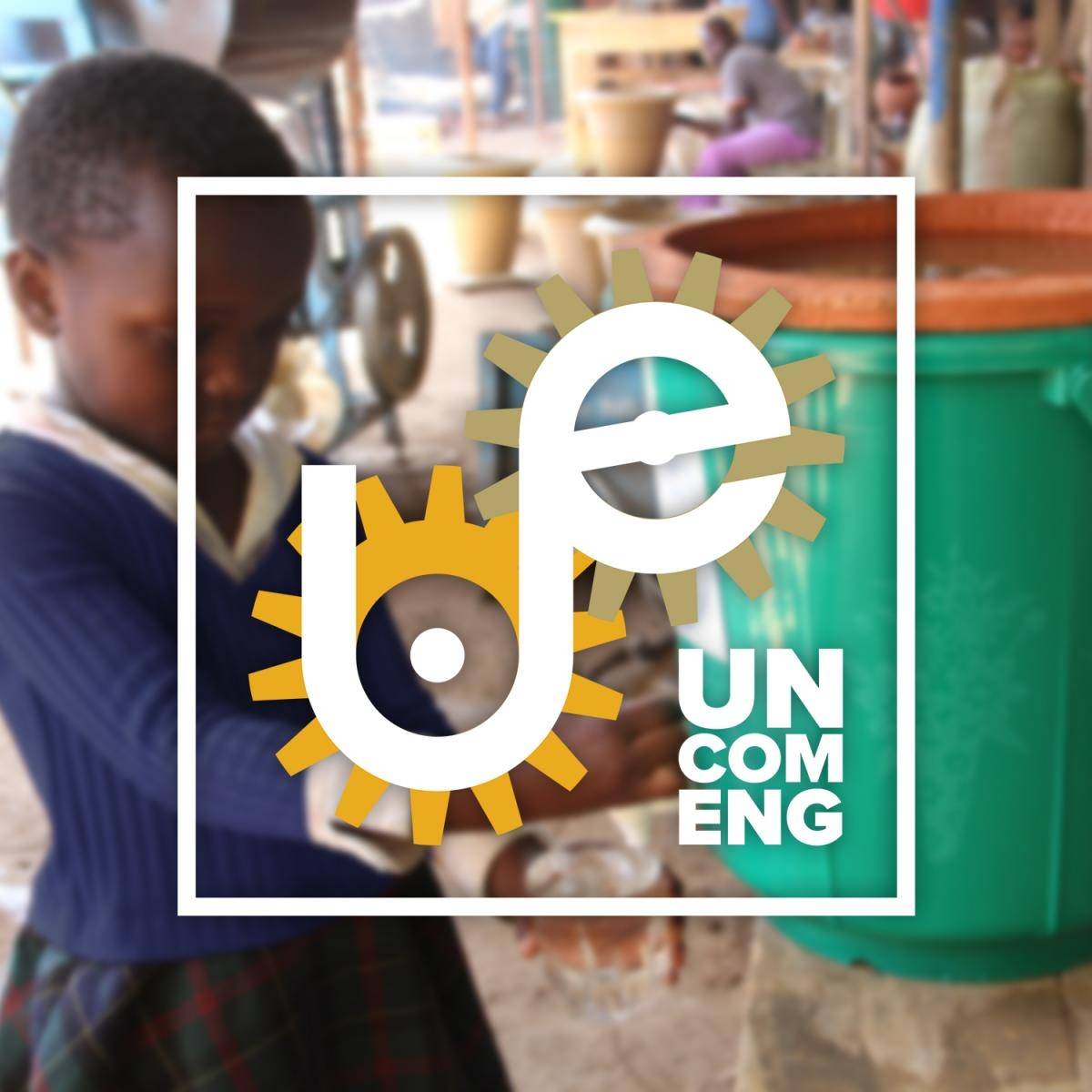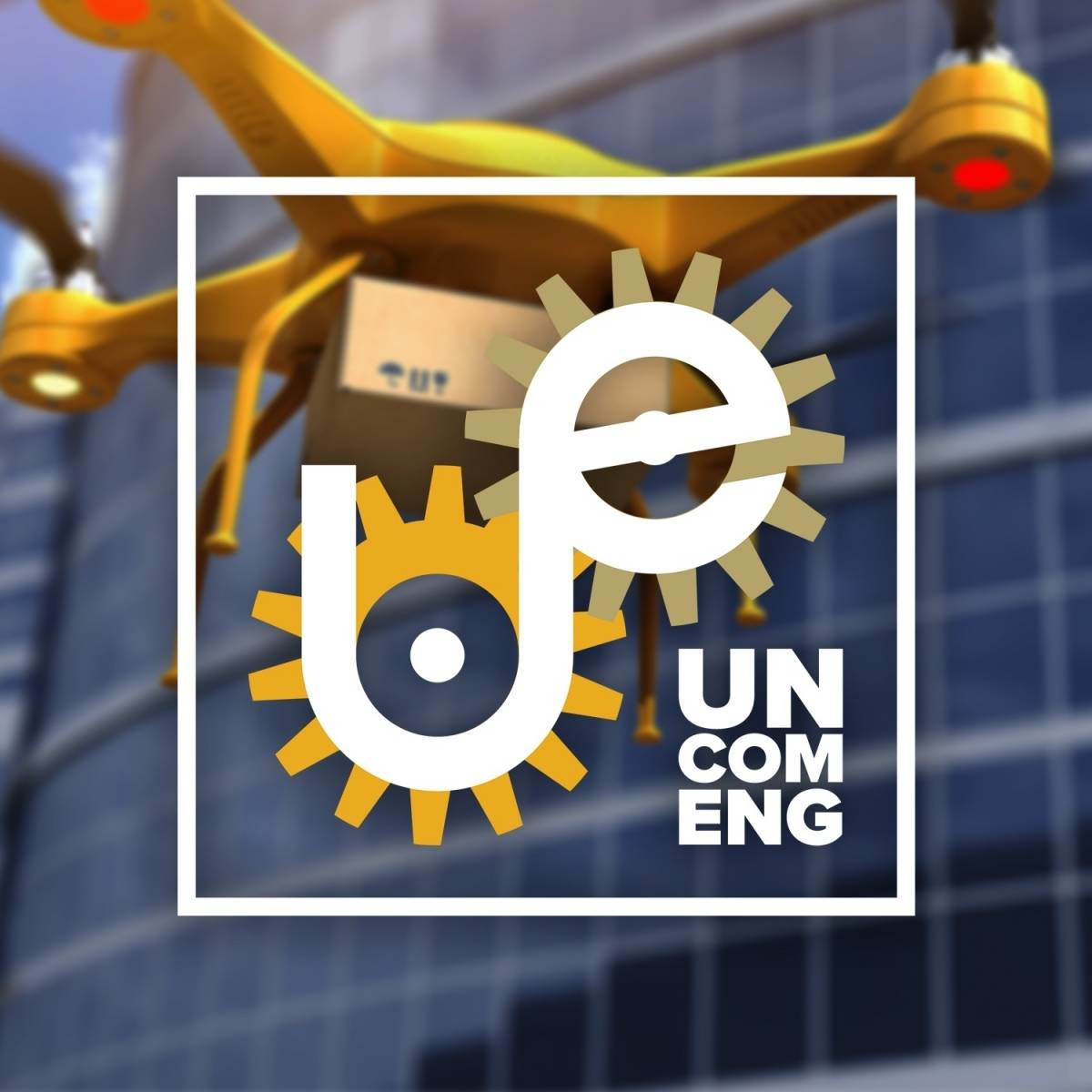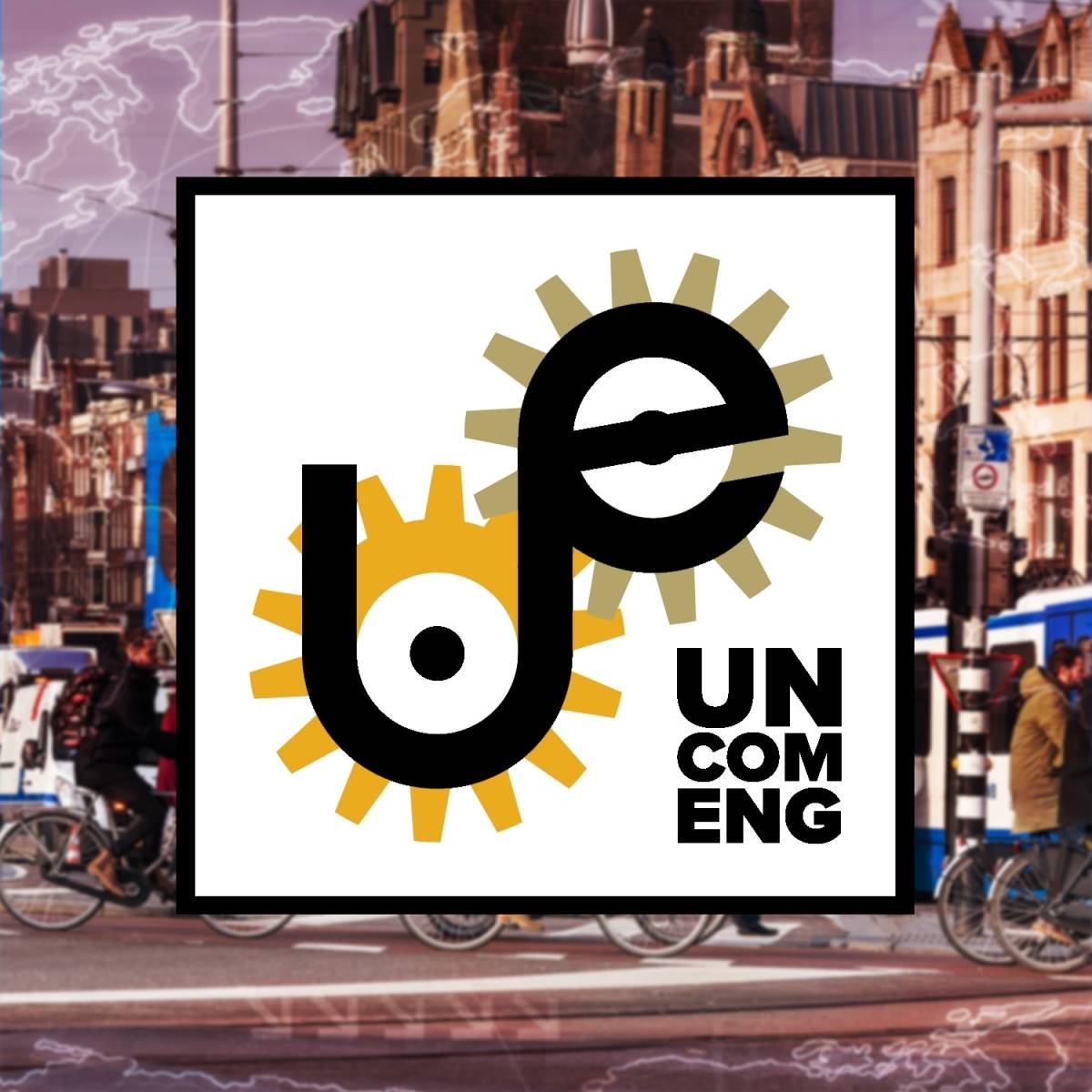
Steve W. McLaughlin
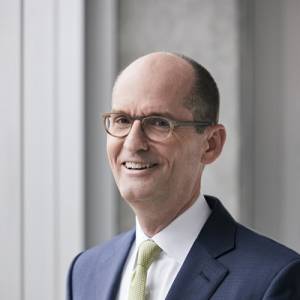
Adjo A. Amekudzi-Kennedy
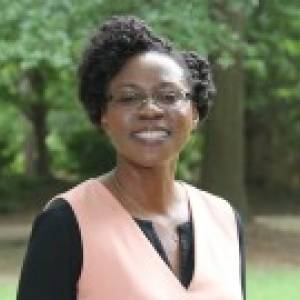
Audio
Audio & Captions
Transcript
Steve McLaughlin: Preparing engineering students to have leadership skills is needed now more than ever. Graduating students need to be equipped with the skills to solve global challenges such as climate change, water scarcity, and metropolitan congestion.
[steam whistle]
[applause]
[marching band music]
This is the uncommon engineer.
Man: [archival recording] We’re just absolutely pleased as punch to have you with us. Please say a few words.
[applause]
Steve: Our guest today on The Uncommon Engineer podcast is Dr. Adjo Amekudzi-Kennedy, leader of the Global Engineering Leadership Minor here at Georgia Tech. She's an associate chair for Global Engineering Leadership and Entrepreneurship and a professor in the School of Civil and Environmental Engineering. Welcome to the program, Adjo.
Adjo Amekudzi-Kennedy: Thank you, Steve. It's a pleasure to be here.
Steve: In the intro, we talked about the importance of leadership. So it's not just about preparing engineers that know how to solve problems, but preparing them for leadership roles. Can you tell us a little bit about the Global Engineering Leadership Minor and what inspired you to create this program at Tech?
Adjo: OK, yes, thank you very much for this opportunity. So the Global Engineering Leadership Minor is one of three tracks of the Institute's minor in leadership studies. The other tracks are in business management and public policy. And the minor in leadership studies was started between nine and 10 years ago. About six years ago, Wes Wynens, who is the leader, the director of the Leadership Education and Development Program at Tech and also directs the minor, approached the chairs of the Schools of Engineering and had a discussion with them on starting a minor in leadership studies track in the context of engineering and for engineers. And at that time, the chair of the School of Civil and Environmental Engineering was Reggie DesRoches, so he volunteered Civil and Environmental Engineering to do it, and then tasked me to work with a vast array of— and then we looked at the leadership literature. We wanted to understand the different kinds of models that existed, and we dovetailed on the skills model of leadership because, essentially, it's a competency-based model that says anybody can learn how to lead, and we wanted to be that broad-based. And so independent of the traits you were born with or your past experience, you can learn to lead and continue to develop those skills and apply them. So we developed the the leadership minor, which has come to be known as the Global— formally known as the Global Engineering Leadership Minor, or GELM, very much to place students in a position to contribute to leading and also lead in solving our global grand challenges and other societal problems and also to be able to work effectively across cultures doing this.
Steve: You talked about a couple of things, and one that really caught my ear was we often think that leaders are born that way; you're either a natural leader or you're not. And you really emphasize the importance of, you know, no, we can we can teach leadership. We can prepare students to be leaders. And I’d really love to hear a little bit more about that. But also in the global context, what really distinguishes preparing students to just be leaders versus preparing them to be global leaders?
Adjo: Identified four or five main areas that we wanted to cultivate leadership skills around. The first one is just simply knowledge of leadership theory and concepts. We felt the students need to know that. The second one is problem solving, which is evolving into, really, problem discovery and solving because those two things are important. And when you look at the education literature, you see it increasingly focuses on both problem finding and solving. Sometimes people call it problem discovery; I'm using that interchangeably here. And problem solving, finding, has to do with are we doing the right problem. So it has more to do with effectiveness, whereas problem solving is are we doing the problem right.
So essentially, I mean, we could be doing the problem right without doing the right problem, and that's not very effective, but highly efficient. So we want to do both. And then the interpersonal and intrapersonal skills, right, is the third. Cultivating systems thinking, analysis systems, analysis thinking, big picture thinking around the grand challenges is the fourth. And then cross-cultural competencies is the fifth.
And so we built the leadership program on these five pillars, these five foundations. You see, we added the cross-cultural piece because we realize it’s increasingly a cross-cultural world. And then the technical piece is the problem solving. Finding the people skills, social judgment skills is the inter/intrapersonal. And then the ideas, conceptual skills, are the systems thinking piece.
Steve: I'm really interested to learn more about the students. And if you could tell us a bit about the students that are in the minor and what it might take for them to further consider the minor and then what they do after they graduate.
Adjo: Our students go everywhere. We have students who go into consulting when they are done. One of them went to the U.S. Army Corps of Engineers. Actually, I think that was a mechanical engineer [indistinct name] who did that. Some of our students go into nonprofits. One of our students, I remember, went into Teach for America. He's going to do that for two years and then come back. He has a business consulting degree, business consulting program with Deloitte here in Atlanta. He was a student from Industrial Engineering. And then a lot of our students go to graduate school. So they go everywhere. The students in the minor, I think they are remarkable individuals. They are, you know, they— especially when they come back from the global practicum, I've always said, you know, when they come back, they— what's the word I'm looking for— you know, they are both simultaneously more confident and less confident— let me explain— and I think it's a very good combination.
They come back and you see that they are less confident because they realize, wow, it's a vast world out there. The problems are varied and they may be so different than what they've seen. They understand the nuances of culture effects, the way people think about problems. They effect solution pathways. I mean, they have matured in some remarkable ways that make them humble. OK, so that's what I mean by less confident.
But, simultaneously, they are more confident because they've gone into situations where they knew nothing about the culture. Maybe before they went to accept what they've learned about, and they've had to figure out how to work in those contexts, first of all. And then secondly, to work effectively, right, while interacting with people who are foreign to them, but they grow to understand; they go to learn their culture and so on. And then they actually contribute, and contribute at the high level. So I think they come out feeling “I can go anywhere and do this,” and then so they are more confident. And so it's a knockout combination, I always say. And I think our students, they are ready to do anything. I mean, they inspire me.
Steve: That is not really that much different or separate from your own research in that your research is concentrated on sustainability, sustainable infrastructure. And I'd like to learn a little bit more about what you and your students are doing, and why is sustainable infrastructure and development more important than ever.
Adjo: OK, so thank you for that question. I think I can talk about sustainable development and infrastructure maybe for the rest of the day, so let me try to boil it down. So, look, I do think that sustainable development has always been important. I mean, if we go back historically, there are a number of societies which failed because they haven't figured out how to develop sustainably and they went out of existence. So it's always been an important element. But perhaps the sustainable development risks, the risks to sustainable development, have changed over time. And recently, one of the critical risks to sustainable development is resilience, system resilience,
because when we look at the changing climate, the hazards associated with it and the fact that they are changing in frequency, they are more frequent if you look at climate hazards. The magnitude is higher, and they really wreak havoc and create a lot of damage when we have acute shocks like flooding, hurricanes, storm surge, fires, all these climate-related hazards occurring, and we are talking about billions and billions of dollars of damage. And so it is always important, I think, for us to think about sustainable development. And if you look at the practical applications, they usually focus on economic advancement. So if we're talking about transportation infrastructure or any other kind of infrastructure, we want to develop it in a way that helps advance the economy, makes us more competitive economically.
It should protect the environment, because ultimately, if we don't protect the environment, that becomes the constraints to developing sustainably and then becomes the risk, right? And then certainly it should advance social quality of life. What does that mean? We are talking about access to health, access to jobs, basic access to basic human services. And so if we are doing it right, we should be doing all of these, and we should be leaving no one behind, OK. In other words, infrastructure is an enabler. It enables us to accomplish different things. And so it creates wealth, and you can really see that if you look at the World Bank has done studies on this. You look at correlation between different types of infrastructure, quantity and quality, you see that they correlate very highly with the gross domestic product, for example, so it's quite aligned. So essentially, if we have different levels of service for infrastructure, or different standards of infrastructure in different areas or for different communities, then it means we are really going to leave some people behind, OK, because infrastructure is an enabler of wealth now, layered with resilience, the fact that we have increasing exposure to different kinds of hazards.
And, you know, I'm focusing on climate hazards, but there are also man-made hazards, right? And so over time, we see that resilience has also become incorporated into the definition of sustainable infrastructure.
Steve: Well, Adjo, I can't tell you how much I've enjoyed our conversation just quickly reflecting on really the four or five different things we've talked about, really spanning all aspects of not only civil engineering, civil and environmental engineering, but engineering as a whole, and you're right at the middle of all of those. And I can't thank you enough for the time today, but more importantly, for everything that you're doing for your students, for your school, for Georgia Tech, to make it a better place. We're really lucky to have you in our community, and I can't wait to work with you more. So thanks so much for coming today on The Uncommon Engineer.
Adjo: Thank you so much, Steve, and I appreciate the opportunity and I appreciate all you are doing to advance several of the things we talk about in the College of Engineering.
[marching band music]
Geekout
Audio & Captions
Transcript
[big band swing music]
Steve McLaughlin: You know, as you were describing both the experiences in the classes just made me realize, I think I'd love to take, you know, some or all of those courses. Can you quickly go through— because we have probably a lot of Georgia Tech students out there that are getting even more interested, can you quickly run through some of the courses, and also tell students where they can find them?
Adjo A. Amekudzi-Kennedy: OK, excellent. So students can find a list of all the courses in the Global Engineering Leadership Minor in two places. If you— in fact, all you need to do is Google “Global Engineering Leadership Minor” and our minor comes out on the top. But you can go to the Civil Engineering website. You can link to the webpage for the minor there. And then you can also go to the Leadership Education and Development at Georgia Tech, and you'll be able to link to the minor pages from there. So the gateway across the minor is Foundations of Leadership. It introduces students to different ways of exercising leadership, helps them to identify their own strengths and weaknesses and how they can best work with others in a leadership context. You see topics like Development of Leadership Theories, Values and Ethics, Group Dynamics, Multiculturalism in Leadership, Performance Excellence, Conflict Resolution, and so on and so forth.
We have the Global Engineering Leadership course. Now, I should say that the Foundations of Leadership course is taught by Dr. Wes Wynens, who is the director of the leadership program. And then we have the Global Engineering Leadership course taught by Rudy Bonaparte— Dr. Rudy Bonaparte and Dr. Lisa Rosenstein. This course introduces students to a range of skills necessary to succeed as a leader in an engineering firm. A very nice thing about this course is that it has several mentors who are either presidents, CEOs, directors of major engineering companies who work with the project teams in the course to develop a company, a blueprint for a company, and then morph the blueprints to the next level to take the company overseas. So this is a very fun course. The students like it a lot.
We have Environmental Technology in the Developing World taught by Dr. Joe Brown. It’s a hands-on course on air and water quality studies in low-technology environments and the linkages to public health. The students learn communication. Dr. Lisa Rosenstein is part of the course. They also get some immersion in cross-cultural awareness when they travel to Bolivia, and also get an understanding of leadership in the context of new technologies.
Then we have Construction Management in Megaprojects, which is looking at methods, models and best practices for effective and efficient planning and construction and delivery and operation of megaprojects. Now, megaprojects are projects that are a billion dollars or more. The students are able to also learn about cultural and ethical issues, contractual and legal issues, dispute resolution, and effective team development in this course.
Then we have Sustainable Transportation Abroad taught by Dr. Kari Watkins. This course is looking at the planning, design, and operations of transportation systems in the countries that are known for sustainable multimodal approach to transportation. The students get to develop cultural awareness in this course, and they also get a taste of mentored learning. What does it mean? It means Dr. Watkins embeds transportation professionals in the course when they travel abroad to the Netherlands for their field work, so the chief bicycle officer of Atlanta, different professionals like that. So the students can get to experience the course also through the eyes of mature professionals based on the kinds of questions they ask. And it's a rich learning environment.
Disaster Reconnaissance Studies taught by Dr. David Frost looks at hazards engineering and disaster management. The course travels to China and Japan. We have Introduction to Structures and Historic Structures taught by Dr. Lauren Stewart and Dr. Lisa Rosenstein, key concepts of structural engineering, system resilience, and the students get a real dose of written, oral, and graphical communication in this course. In fact, one of the students said about this course, “You’re are you are going to have a lot of projects. You are not going to sleep a lot. You just have to suck it up.” But they love the course. They have said many wonderful things about these courses.
Smart and Sustainable Cities— introduction to how cities function, examining various infrastructure systems like transportation, power, water, and buildings, and then understanding key challenges and emerging solutions in urban environments to create more sustainable cities. The students learn about how to effectively communicate with urban stakeholders on various smart solutions to sustainability challenges.
Origami engineering is looking at state-of-the art algorithms to design origami structures. The students then get to apply origami engineering to solve societal problems. They also get formal training in team building and communication and the development of individual awareness.
And then we have a couple of courses, well, one more course, Water Resources Systems taught by Dr. Georgakakos. This is looking at what our resources planning and management in the face of climatic, environmental, socioeconomic, and technological change. The students also get a chance to develop stakeholder engagement techniques. They are introduced to public policy development, team leadership and dynamics, and then self-reflection and awareness.
And recently— and I'm sure we are going to talk about this, because I know this is one of your favorite topics— we started developing courses in entrepreneurship, which also opened to the students, leadership students, and so we have a course Innovation and Entrepreneurship for Civil Engineering Systems taught by Dr. John Taylor and Bill Higginbotham, and Dr. Robert Simon. And perhaps we will just save this and talk about it if we get to talking about entrepreneurship.
Another, final course, Infrastructure Finance, is also one of the courses looking at methods, models, and best practice for effective infrastructure finance. Students get to develop collaboration skills in an environment with competing viewpoints and objectives. These two courses are the two of the most recent courses. They were piloted in the spring of 2020.
Steve: So before, you just barely touched on the developing entrepreneurship program inside Civil Engineering, you know, and as you said, something that's really very close to my heart. We think, a lot of times when we think of entrepreneurship and startups, we think of super high-tech kinds of things— new gadgets, social media, things of that type— but it's absolutely the case that entrepreneurship is just as important in civil and environmental engineering, and I'm really curious about what it is you all are thinking and how that folds into some of the Global Engineering Leadership Minor stuff. So I can't wait to hear what you are doing about entrepreneurship in Civil and Environmental Engineering.
Adjo: There are already several opportunities, including CREATE-X, that the students can participate in. John Taylor has taught a prototyping course, so we’re thinking through how he can adapt it and offer as the next course after the intro course. There's an infrastructure finance course we already have, Mike Messner teaches. And then we are thinking about entrepreneurship practicum where students can go and embed in a company, and it could be a venture company, but get a good sense of entrepreneurship.
And, you know, we are going to roll out an annual entrepreneurship impact competition and prize this year. The Higginbotham Entrepreneurship Impact Prize is going to reward creating value in the broadest of senses. OK, so whether it's creating value for some local community, creating value in the context of a firm during an internship, as a group team or team project within the course, but some kind of value creation that improves the social and human condition. The prize is $5,000, dollars and students get to win this, a group or individual, individual or group of students gets to win this on an annual basis. So as you see, we are really developing some entrepreneurship pathway. We want to instill entrepreneurial mindset and confidence in our students so that even when they leave, Georgia Tech graduates go to a company, they don't think of themselves solely as employees. We want them to think of themselves as value-creating individuals who are going to come and create value, orders of magnitude higher than they would otherwise. And so I think that's the idea.
Steve: I had a chance to participate in a panel that you moderated on the topic of race in America and social justice. That panel that you led focused on what we in the Georgia Tech community can do to make improvements in higher education, in our campus, the companies that we work with, and the world at large. I'm really curious about hearing your thoughts, not only about what we talked about, what the challenges were, but how that conversation is evolving within Civil and Environmental Engineering.
Adjo: OK. I think this is a very important question. And first of all, let me thank you for participating in that panel and for, you know, participating in such an open and honest, candid way. I think the panel was a tremendous moment in our school history from my perspective, OK? And I think in part because, you know, everybody who participated in the panel, I think was just a very honest, brought a very honest and open, you know, approach to the topic, and that made a difference. But I will tell you that I also think the fact that the dean was on the panel made a difference. I admit, number one, it made people realize that the impacts of racism are quite broad, OK. You may be surprised who may be, you know, on the receiving end of racism. But I think it also made people feel it's OK, it's OK to talk about it. So to me, maybe that's one of the biggest things that came out of the panel.
I've been at Georgia Tech for 20 years. And when I say 20 years, I find it very funny because I don't feel it's been 20 years. [chuckles] But I've been at Georgia Tech for 20 years. We've never had such a discussion, at least in my experience. And let me just say that I have never been in such a discussion. So now people can have honest and open discussions about race— huge movement forward in my experience and in my point of view, from my point of view. Because, I think once you can do that, then there is a pathway to begin to make real progress, you see. And I think people should be able to have those conversations and let people disagree, but disagree amicably and try to understand why they disagree, because to me, that's how steps forward are made. So that is the first thing. So I think that the discussions continue.
Now, one of the things that we decided to really focus on is hiring some of our outstanding minority faculty. We have to bring some more minority faculty is what we agreed on, so we have put together— Don Webster, the school chair, has put together a faculty search committee, and I'm going to serve on it as well. And one of our tasks is to identify outstanding minority faculty and with the goal of hiring additional minority faculty. I think that is extremely important because, number one, when we have more minority faculty, then I think more minority perspectives get reflected in decision making, and certainly the environment reflects that, OK. Number two, students can look up into the faculty and see a minority faculty. That makes a difference. That makes a difference for nonminority and for minority students. And then number three, I think it's very helpful when minority students can look into the faculty and see minority faculty like themselves because it changes their perception of who can be faculty, OK, and that helps with recruiting of students. That helps with retention of students at all levels. And it also helps with recruiting of faculty and retention of faculty. I think all the things I've said are things we all know. So, but I just wanted to emphasize them. So I think that's one of the major things we continue to talk about and have started taking steps to make happen.
And we also followed up the panel with an open discussion with our staff about what we can do to create a more inclusive environment that recognizes what they do in a certain way and also recognizes them as co-creators of the environment in which we are educating our students. OK, so this is something that's in process and we are going to be thinking and working through how we can continue to enhance our environment to be better.
And then, in terms of the students, the students talked about a number of things as well. And what we are planning to do is to work with student advisory councils to prioritize the issues raised by the students.
Steve: You know, I know that you're also interested in the overlap between transportation and how— overlap between transportation and sustainability— and, you know, we're recording this podcast, you know, in the midst of, you know, being off campus and everything associated with COVID-19. So I know that you recently contributed to an article on five lessons that the current pandemic is teaching us about what it means to develop sustainability through the lens of transportation. It sounds fascinating, all of those pieces kind of coming together in a really challenging time. Can you share a little bit more about what you're doing in that work?
Adjo: Yes, yes, thank you very much. I'll be glad to. So, you know, we wrote this paper because when COVID-19 hit we wanted to take it as an opportunity to learn some lessons. And essentially what we've recognized is that there have been challenging times across history. But every time there are challenging times, well, of course, you know, we may see that people lose their lives, they lose their livelihoods, et cetera, but we see that is also an opportunity. And sometimes it's an opportunity people take to learn lessons and do things better. So this was really the idea behind this paper. And, you know, we started out talking about thinking multimodally in terms of transportation. What do we mean? It means we really are going to serve ourselves well,
and it actually is a resilience strategy. If we have a good multimodal transportation system, that offers multiple choices that are effective choices for transportation. And the reason we started with that is, you know, if you look in the literature, historically, public transit has been considered a very sustainable transportation mode. And it is if you think about it from the perspective of the carbon footprint and the emissions per capita, then it certainly is much more sustainable than vehicles, single-occupant vehicles in particular. But you notice that when COVID-19 hit, many people decided that they don't want to use public transit anymore because they wanted to reduce their exposure to the virus. So public health pivoted to become the critical risk in their eyes, right? And so all of a sudden we couldn't say, well, public transit is the most sustainable. We couldn't say that anymore because the context has shifted, right? And so, and that's the whole point. The point is that the critical risks to developing sustainably, they are not fixed. They will continue to shift from time to time. And so it is really a robust strategy to develop all the modes in a way that are seamless and fit together very well and offer choices, multiple choices, so that as the risks shift, the most critical risks shift, we can also pivot to different modes in a seamless fashion, and that makes us more sustainable, OK. So we talked a bit about that. And then, and that means that the kinds of models and analytical frameworks we use for planning must be comprehensive. You know, we can not only focus on the natural environment or at one time focus on public health and the next time focus on— we have to focus on all of them simultaneously. And we also have to talk about resilience because resilience is critical, and actually see that with, you know, when the demand for public transit went down, it meant that financial resources for public transit also followed. So you will notice that some laws have been passed to provide infusions of funding into public transit to keep public transit viable. So developing economic capital in itself is another resilience strategy, because it means that when these kinds of situations show up, you have the wherewithal to do these kinds of infusions when people lose their jobs when public transit is not as financially viable and so on and so forth. And so it tells us that we can't, simply because we have one particular risk, we can't just decide to just focus on that. We must continue to develop all the capital in a balanced way— economic, environmental, social capital and equity capital all together. So we talked a bit about that.
And then we also talked about tele-activities as part of an effective infrastructure sustainability strategy. And why? Because the COVID-19 era has really given us practice with tele-activities. You know, Global Workplace Analytics, which is known as one of the nation's authorities on work-at-home, estimates that just a little above three percent of people work from home half-time or more, OK. And then if we look at the Gallup polls, they also show that 43 percent of the workforce works at home, at least some of the time, OK. But they make a prediction— they predict that the longer people are required to work at home, the greater the adoption of working at home we will see when the dust settles. And they get a few reasons, right. They say that basically the first one is reduced concern of managers and executives. That was one of the biggest holdbacks to remote working— trust— trust that employees are doing the work when they are home. But, you know, in this COVID era, you know, many managers have come to see that their employees can be actually quite effective working at home. My own experience, I mean, I feel I've been much more effective working from home in this COVID-19 era. So that changes the thinking.
Increased pressures for disaster preparedness, you know, essentially what they said was that this COVID-19, it took people by surprise, and people do not want that to happen again, so they want to have a viable alternative in case it's needed they pivot and start working from home. So this is not going away, right. There's some cost-saving opportunities that come with working from home. I think you know that if you drive every day to work, you probably haven't bought gas for the past two months if you're like me, right? And then the congestion, sitting in congestion, I spent at least one hour a day on the freeway, so in the in a year, over 300 hours. I think I can write maybe three more papers or even a book, maybe a small book, right? So I think people are thinking about—
Steve: We’ll hold you to that. We'll hold you to that, Adjo.
[laughter]
I’ve written that one down.
Adjo: Yes. OK, good, good. So you see, and then finally, you know, the increased awareness of the impact on sustainability in terms of air quality. You know, a few weeks into COVID-19, I walked out of the building and looked at the sky and I felt it was bluer than I've ever seen. And then I started reading articles and looking at data on emissions. And clearly, in many cities, air quality has improved because congestion has reduced and so on and so forth. So it's not going away. That's the projection. But how many people are going to work from home? How are they going to work from home? Can we actually use this as an opportunity to think about a multipronged strategy that is just more effective? When does it make sense to have face-to-face interaction? And let's be intentional about doing that then. And when can we work from home? So in other words, telework working has become part of an effective transportation strategy and actually a resilience strategy. So we talked about that.
And then we also talked about economic capital as being very important even when it is not the critical existential threat because you can use it to tide over challenging times like make infusions into public transit when it's not financially viable, as we talked about, and so on and so forth.
And then finally, we also talked about social capital, social capital, just simply building the coalitions and networks to enable things to happen that we want to happen. And we've seen this in the era of COVID-19, which is more of an acute shock. It's been an acute shock to us. But in this ongoing challenge of the changing climate, if we've been able to mobilize ourselves to address some of these COVID-19 issues, we can even all the more so mobilize ourselves for this as sort of long-standing, chronic stress of climate change. So really understanding that we can do the same in both fast-moving and slow-moving disasters. and we have multiple going on in parallel.
[marching band music]

